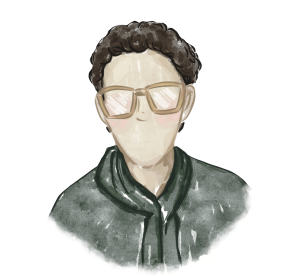Tales from Transportation Camp
The Compiler Team's key takeaways from UCLA's 2024 Transportation Camp LA. By Vyki Englert, Scott Frazier, Nina Dinh, Marie AranetaRecently, four members of the Compiler team had the opportunity to attend the latest edition of UCLA’s Transportation Camp LA. Shout out to Juan Matute and the wonderful team at UCLA Institute for Transportation Studies for bringing together folks from advocacy, academia, and both the public and private sectors on a Saturday to explore what transit means to us and our broader community. Each of our team members got to participate in a variety of breakouts and we wanted to share our experiences.
 Nina
Nina
My favorite session, led by Nina Kin and Eric Dasmalchi, was titled “What does your ideal Trip Planner look like?”
I was enticed by the title alone because I have always sensed there was a need for improvement with trip planners, but I had a tough time identifying tangible ideas. I hoped to hear ideas from others and I certainly did!
Two that really aligned with me:
- Data on the walkability of the area. I like seeing how long the walk will take me from point A to B, but the experience of that walk varies greatly depending on how maintained the sidewalk is, if cars are going at high speeds next to me, or if the lighting is poor.
- Better detouring capability; apps like Google and Transit have a hard time accounting for detours. If I hop off the rail, it tends to assume I want to walk the rest of the way even though that may not be the most efficient route.
I enjoyed hearing about Metro’s goal to consolidate their apps, and this session was a way to brainstorm. It was cool meeting the folks creating Catenary maps as well!
 Marie
Marie
I attended several interesting sessions, but the one that stood out to me the most was Phoebe Chiu’s presentation on “Public Art and Artists in Residency on Transit/Street Furniture.” I found this session particularly compelling because it focused on using art as a catalyst for positive change in public transportation. Phoebe showcased various examples of how art has influenced public transportation infrastructure, such as a TAP card design contest at UCLA, slow street initiatives in Oakland and Los Angeles, and art installations at transportation facilities.
This session highlighted the idea that art not only enhances the aesthetic appeal of public transit but also has the potential to engage and involve the communities it serves. This concept resonated with me as it reminded me of a zine titled “This Book is a Bridge,” which showcased the work of two artists, Kelly Gregory, and Mary Welcome, who participated in Washington State DOT’s artist-in-residence program. The program at Washington State DOT was the first of its kind in the nation, and it aimed to encourage collaborative efforts between transportation and the arts.
During the session with Phoebe, attendees shared their experiences with creative collaborations in the public transit sector. I was introduced to the work of Marcela Armas, a Mexican artist whose performance art installations provoke discussions on the environmental and mental effects of cars. I also learned about Outfront/JC Decaux’s #commutersofla transit series, in which they utilize bus shelters for community art installations. Witnessing how art could be seamlessly integrated into transportation initiatives in impactful ways has left me feeling inspired to seek out further opportunities for merging art and public transit.
 Vyki
Vyki
This was definitely not my first unconference, but it was the first in many years. I was able to lead a session on Transportation Demand Management (TDM) in the City of Los Angeles: What is it? Why does it matter? How do we unstick it? With about 20 folks in the room, we dove into the available materials on the City of LA Planning: Mobility Initiatives website and reviewed their published timeline. City staff presented a report with a draft ordinance and program guidelines, which was recommended for approval by the Planning Commission in September 2022. Maybe you remember what happened in October 2022? Since then we’ve seen a lot of turnover, both in city staff working on the project and our elected officials – and no one seems to be sure who owns this initiative now. Officially the city website says it’s with the city attorney and expected to be voted on by council in spring 2023; it’s now summer 2024.
For the uninitiated, TDM is a policy tool cities use to help ensure builders and employers are part of the solution when it comes to shifting commutes to more climate-resilient modes.
We started with the assumption that TDM is good and that one of the best examples of a well-executed program is from our neighbor, the City of Santa Monica. Santa Monica’s program gives employers and developers an outcome-based goal for reducing single-occupancy vehicles.
Together we workshopped:
- Challenges: this is really wonky, how do you get folks excited about it?
- Strategy + Tactics: tie TDM to a successful car-free Olympics, find new champions for TDM on the City Council who can get it agendized
- Potential allies: Move LA, Parking Reform Network, Investing in Place, LA28
We agreed that a key need is developing shared messaging around why this is important and can help us have conversations with colleagues, advocates, allies, and champions. While we didn’t walk out of the room with any specific homework, I’m excited to continue these conversations with the folks I met last week. TDM is an important tool on our path to becoming a climate-resilient city.
 Scott
Scott
I have so much to say about this event, but I will try to keep it brief. Unlike Vyki, this was my first unconference. The first thing that was impressed upon me when I entered the main room was that there are lots of folks who are so passionate about transportation issues that they will spend an entire Saturday talking about them. But more than that, the number and range of topics that attendees came up with was amazing (and a bit overwhelming). Once the schedule was finalized, I realized I was going to have a lot of tough choices to make regarding the discussions in which I would participate.
Of the sessions I attended, I think I most enjoyed diving into Metro’s TAP card payment system and Cubic, the vendor that it uses to support that system. It was an open-ended conversation, and what I found I liked best about it was being able to variously join in the discussion or to listen as it changed shapes and touched on unexpected topics. The core premise of the session was that LA Metro has been trying to figure out how to improve its fare payments system for decades, but the horizon of its imagination has been giving one vendor chance after chance to solve problems it has proven itself to be either incapable of solving or unwilling to solve.
In the realm of transit technology, there are too few standards and true interoperability remains a work-in-progress. Large vendors, perhaps especially those like Cubic that are owned by private equity firms, understand that they have the ability to reap extraordinary profits from their transit agency customers because the agencies find it so difficult to change course. The discussion flowed in many different directions but remained rooted in questions of how to restore power to the agency as a buyer of technology and to encourage agencies like Metro to seek out better solutions for their riders.